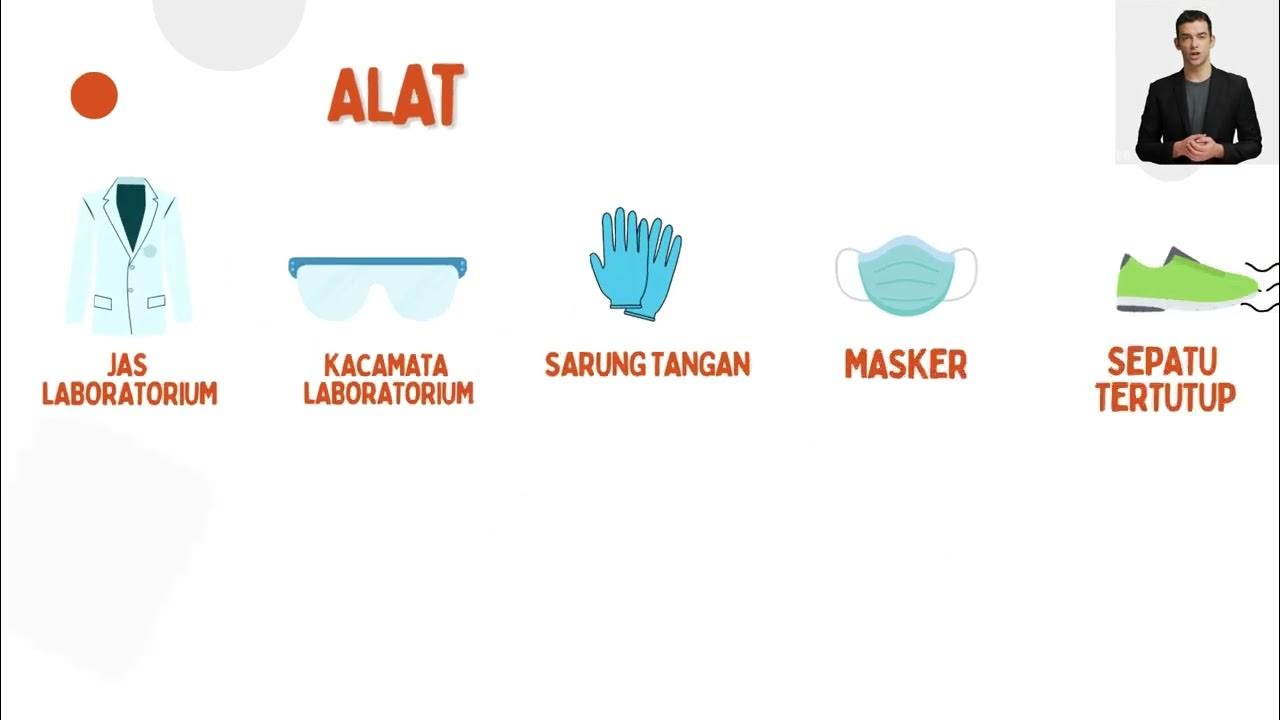Safe Chemical Handling / Lab Safety Video Part 5
Summary
TLDRThis video emphasizes the importance of proper preparation and safety when handling chemicals in the lab. It covers key protective measures like wearing appropriate personal protective equipment (PPE), using splash goggles and lab coats, and handling corrosive or toxic chemicals safely. Key advice includes knowing the risks of each chemical, working with them under fume hoods, and disposing of waste properly. The video also highlights how to manage chemical spills and the safe use of flammable substances. Ultimately, preparation is key to preventing accidents and ensuring a safe laboratory environment.
Takeaways
- 😀 Preparation is essential to prevent accidents in the lab.
- 😀 Always determine the potential risks and wear appropriate PPE before starting any lab activity.
- 😀 When diluting acids or bases, add the acid or base to the solvent, never the other way around.
- 😀 Chemicals should never be removed from the lab, and a break-resistant container must be used for transport.
- 😀 Safety glasses with side shields may not be enough when working with splash hazards—use splash goggles marked with Z87.1 for better protection.
- 😀 Prescription glasses do not provide adequate eye protection; always wear safety glasses, goggles, or a face shield over them.
- 😀 To protect your skin, wear a lab coat and gloves, and consider using a chemical-resistant apron for splash hazards.
- 😀 Be aware of inhalation exposure risks; never smell chemicals and always work with toxic chemicals under a fume hood.
- 😀 For large chemical spills, evacuate the lab, seal it off, and notify authorities. Do not re-enter until cleared by a supervisor.
- 😀 When disposing of chemicals, follow all regulations and use proper disposal containers, ensuring all cleanup materials are treated as hazardous waste.
Q & A
Why is preparation important in a lab setting?
-Preparation is crucial because it helps identify potential risks, ensures the right protective measures are in place, and makes sure that emergency responses are ready in case of accidents. This can prevent accidents and injuries during the lab activity.
What is the correct method for diluting acids or bases?
-When diluting acids or bases, always add the acid or base to the solvent (e.g., water), not the other way around. This is because pouring solvent into an acid or base can cause a violent reaction, leading to burns or other injuries.
What should you do if a chemical spill occurs in the lab?
-If a large chemical spill happens, evacuate the lab, seal it off, and inform the authorities. Large spills can produce dangerous vapors and need to be handled by qualified personnel. Do not re-enter the lab until you have received the ‘all clear’ from your supervisor.
What is the difference between safety glasses and splash goggles?
-Safety glasses with side shields offer basic protection but are not sufficient for protecting your eyes from splash hazards. Splash goggles, marked with the code Z 87.1, are more effective because they provide a better seal and protect against chemical splashes.
Can prescription glasses be used as eye protection in the lab?
-No, prescription glasses alone do not provide adequate protection in a lab. You should wear safety glasses, goggles, or a full face shield over your prescription glasses to ensure proper eye protection.
What type of gloves should be worn when working with corrosive chemicals?
-When handling corrosive chemicals, it's best to use full arm-length rubber gloves instead of regular nitrile gloves, as rubber gloves provide better protection against chemical splashes.
Why is it important to avoid inhaling chemicals in the lab?
-Some chemicals can harm your health without direct contact. To prevent inhalation exposure, always work with toxic chemicals under a fume hood, and keep containers tightly closed when not in use.
How should flammable chemicals be handled in the lab?
-Flammable chemicals should be kept away from all ignition sources like Bunsen burners or hot plates. Store them in dedicated, grounded storage cabinets, and always be aware of their flammability and explosive potential.
What should you do after finishing work with chemicals in the lab?
-Properly dispose of chemicals and waste following federal, state, local, and institutional guidelines. Use chemical-resistant containers for disposal, and ensure that any materials used to clean up chemical spills are also disposed of correctly.
Why is it important to use a fume hood when working with certain chemicals?
-Fume hoods are crucial because they help prevent inhalation exposure to toxic fumes, vapors, or gases. Always work under a fume hood when handling chemicals that can release harmful substances into the air.
Outlines

This section is available to paid users only. Please upgrade to access this part.
Upgrade NowMindmap

This section is available to paid users only. Please upgrade to access this part.
Upgrade NowKeywords

This section is available to paid users only. Please upgrade to access this part.
Upgrade NowHighlights

This section is available to paid users only. Please upgrade to access this part.
Upgrade NowTranscripts

This section is available to paid users only. Please upgrade to access this part.
Upgrade Now5.0 / 5 (0 votes)





